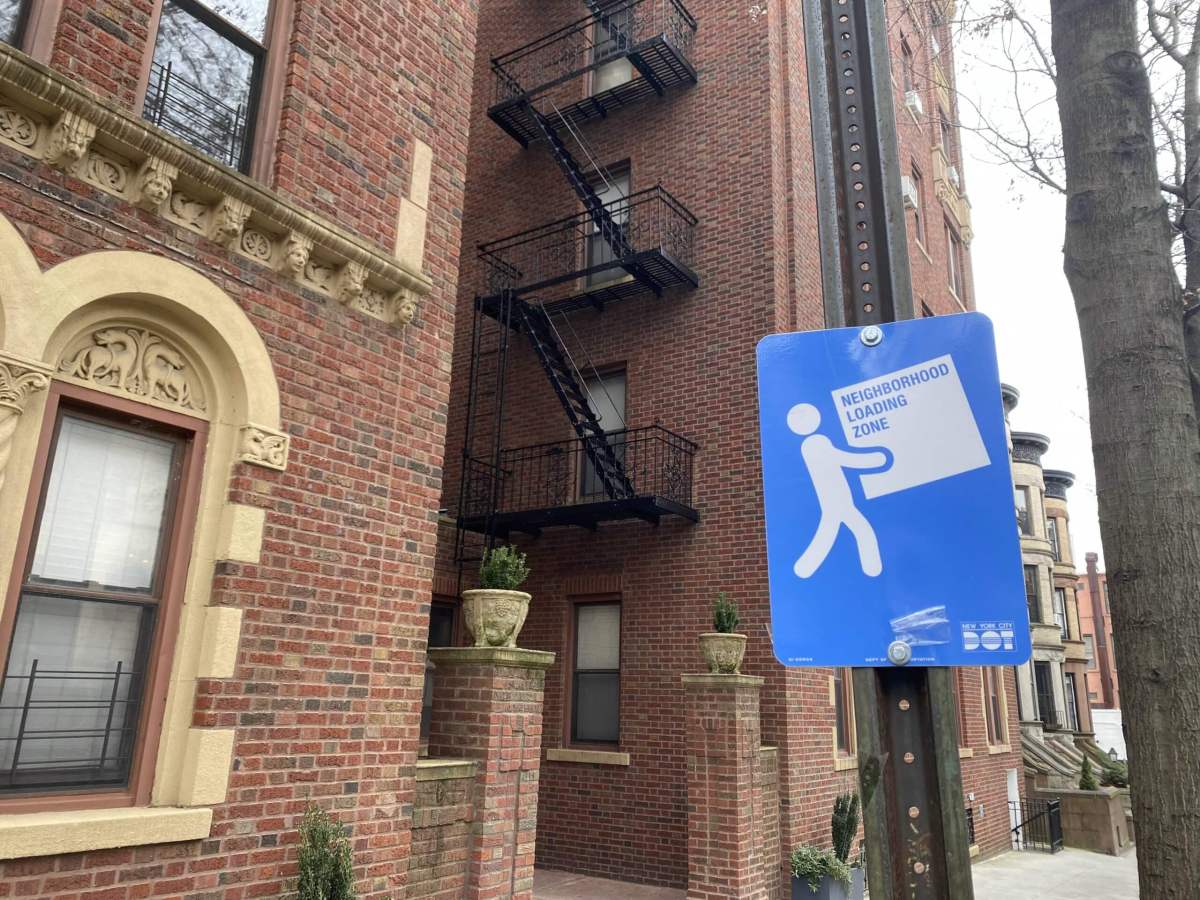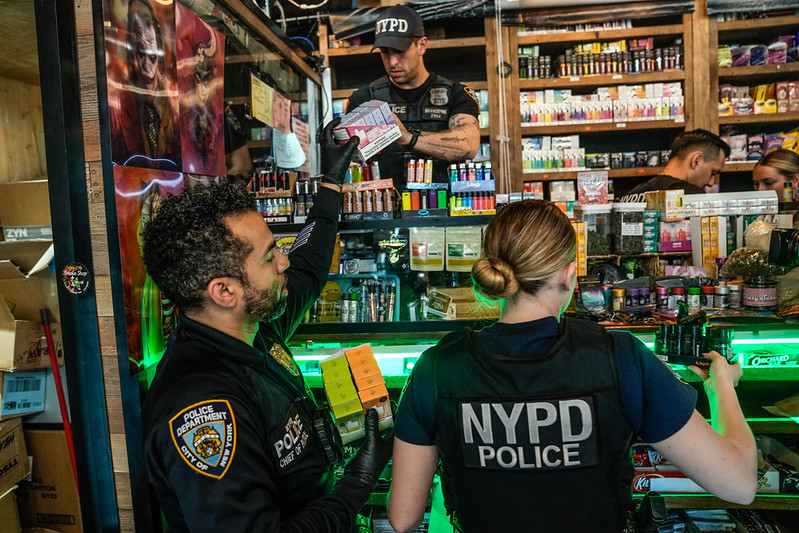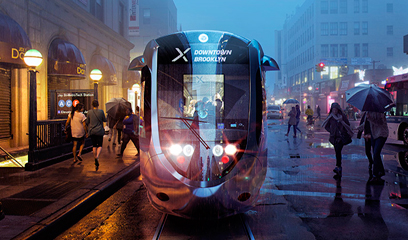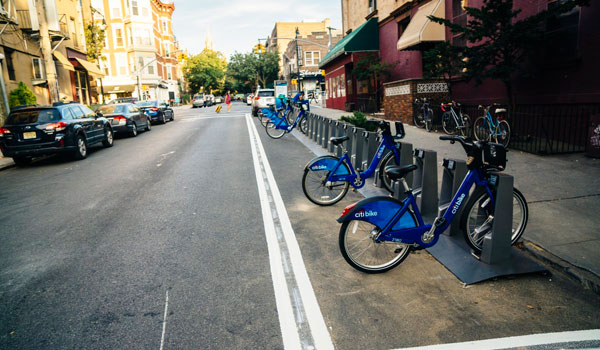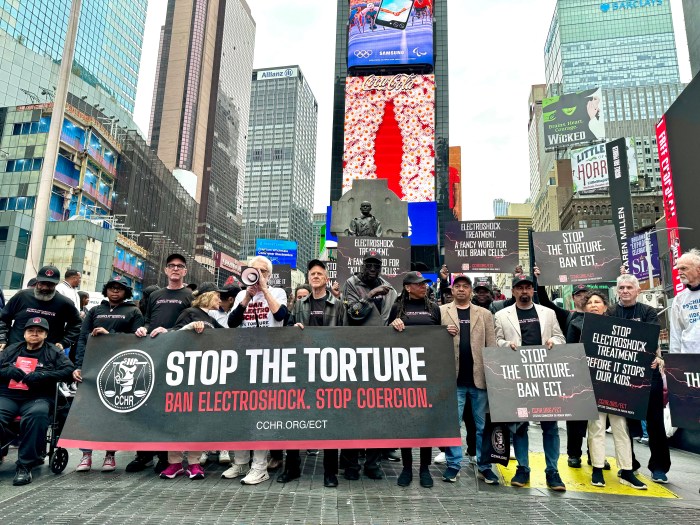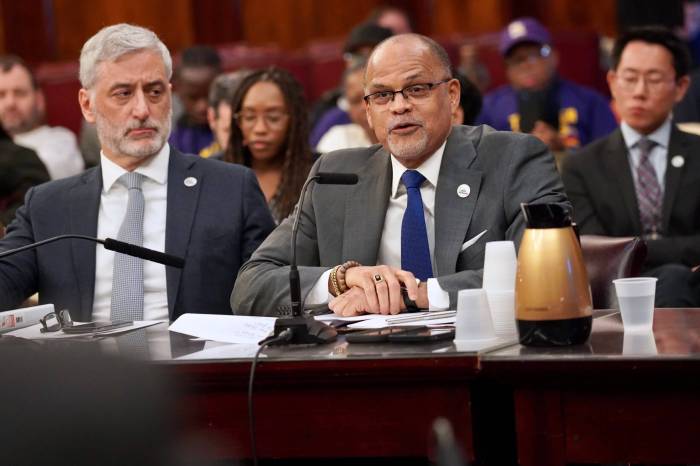Park Slope motorists are incensed over of the installation of “neighborhood loading zones” on two streets in the area — claiming they were put up overnight with no warning to the community.
The neighborhood loading zones program — a Department of Transportation pilot to prevent double parking and congestion on residential streets by freeing up parking spaces for delivery trucks and for-hire vehicles — was approved by Community Board 6 in March before the pandemic, but not installed until December. Residents of the affected streets in Park Slope say they felt ambushed by the disappearing spaces.
“Everybody felt blindsided by it because there was no outreach to the community,” said Sara Vaswani, who lives on Second Street, one of the two streets affected by the program along with Third Street. “It seems like a hush-hush thing.”
The program in Park Slope repurposed a small handful of on-street parking spots on Second and Third Streets between Fourth Avenue and Prospect Park in an effort to prevent double parking and congestion brought on by the thousands of home deliveries made each day due to the e-commerce boom.
Vaswani, who launched an online petition against the loading zones says she agrees that congestion and double-parked trucks are an issue on her block, but that the loading zones aren’t the right way to solve them.
“It is an issue but this is not the way of fighting it,” she said. “It’s just going to increase the traffic of people going round and round for an hour and a half, or idling on the bottom of the street waiting for a parking spot to open up.”
Vaswani also criticized the program for creating space for e-commerce behemoths like Amazon at a time when the city is supposedly trying to save its struggling businesses amid the pandemic.
“It’s not justifiable that you’re giving public space to the private companies that you’re trying to fight at the same time, that hinder your local shop community,” she said.
While the pilot was approved before the pandemic, the pandemic has dramatically increased the number of home deliveries being made by trucks and vans. According to interim Department of Transportation Commissioner Margaret Forgione who testified at a City Council hearing on illegal parking on Jan. 12, prior to the pandemic, 60 percent of deliveries were made to commercial districts and 40 percent to residential areas. During the pandemic, residential deliveries have ballooned to 80 percent of deliveries made while only 20 percent are made to commercial districts.
The neighborhood loading zones pilot similarly drew the ire of car-owning Brooklynites when it was tried out in Clinton Hill in 2019. Residents there also complained that the program showed up overnight with no warning, and car owners who had left their rides in previously legal spots found their vehicles towed after the designation was changed. DOT pulled the program from Clinton Hill after opposition from drivers.
But, Park Slope Councilman Brad Lander seems less likely to give in to car owners’ demands. In a statement to Brooklyn Paper, Lander pointed out the benefits of the program and said that his office will be making sure delivery companies make use of the zones.
“New Yorkers have relied on deliveries more than ever during this pandemic, and our streets are becoming increasingly congested with double-parked commercial delivery vehicles that create unsafe conditions for pedestrians — not to mention slowing down traffic and adding to emissions,” Lander said. “Designated loading zones are a smart way to reduce this congestion, and also create safe places for everyone to unload groceries and furniture, or to pick up an elderly relative.”
Community Board 6’s Transportation Chair Eric McClure said that the board promoted its March meeting widely, as it did with the results of its vote, which unanimously approved the loading zones pilot. The board’s decision prompted news coverage in this newspaper as well as Streetsblog and NY1.
McClure argued that double parking on residential streets is a problem that needs creative solutions.
“Converting a couple of parking spaces on each block for short-term loading — which will also accommodate resident’s need for loading and unloading, should help alleviate those issues, and they’ll still be available for overnight parking,” he said.
The board’s approval in March however was contingent on DOT conducting a “robust” outreach program on affected blocks — which residents say never happened.
“There wasn’t any,” said Second Street resident Jane Rod, who had a loading zone pop up in front of her house last week. “I found out on Facebook.”
Department spokesperson Alana Morales said the agency alerted the community board and Lander’s office, claiming that they were notified of the parking change ahead of time in December.
“We alerted both the CB and CM Lander in March and December as a reminder,” she said.
Minutes from the March board meeting show that the program was approved with a provison that there be a two to three week outreach period conducted by the Department to affected areas before the change was implemented.
The program is a pilot and will be evaluated on its effectiveness, according to McClure.
“It’s a pilot program – if it doesn’t work as intended, it won’t be made permanent,” he said.


